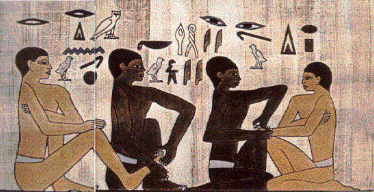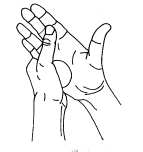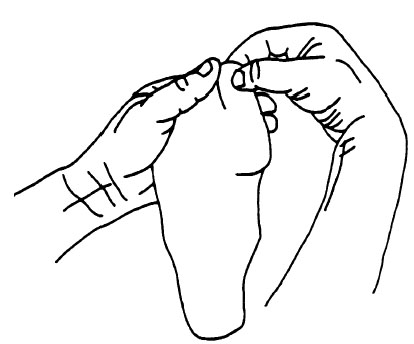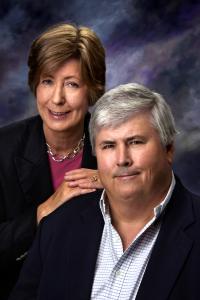|
Reflexology is the practice of applying pressure to the feet and hands utilizing specific thumb, finger and hand techniques without the use of oil, cream or lotion based on a system of zones and reflex areas that reflect an image of the body on the feet and hands with a premise that such work effects a physical change in the body.
A reflexology chart mirrors a reflection of the body on the feet and hands, left foot or hand representing the body's left half and right foot or hand its right half. In reflexology practice, technique is applied to the relevant reflex area(s) to prompt a change in the related part of the body. Research has demonstrated such effects for several reflex areas and their reflected parts of the body, i. e. the kidney reflex areas and the kidneys; the intestine reflex areas and the intestines and the brain reflex area and the brain.
Free Foot Reflexology Chart IPhone App
Free Interactive Foot and Hand Charts
Around the world and throughout history, reflexology has been rediscovered time and time again. Archeological evidence points to ancient reflexology medical practices in Egypt (2330 BCE), China (2704 BCE) and Japan (690 CE).
In the West, the concept of reflexology began to emerge in the 19th century with European and Russian research into the nervous system and reflex- think Pavlov. Reflex therapies were created as medical practices but were soon eclipsed by use of surgery and drugs. The ideas of reflex use for health improvement were carried on sporadically and brought to American in 1909 by Dr. William Fitzgerald, an eye-ear and nose specialist from Connecticut. Physiotherapist Eunice Ingham is credited with developing a system of reflex areas by 1938.
In the East, ancient Chinese techniques were re-discovered in the 1980’s and have spread throughout Asia creating today's reflexology-rich environment with reflexology paths in parks and a thriving reflexology industry of practitioners, businesses and research.
A Short History of Reflexology
Reflexology In Egypt, History Rewritten
Research has shown the specific techniques of reflexology to be effective and beneficial in many ways. A survey of 170 reflexology studies from 21 countries shows that reflexology is effective, impacting a variety of physical and psychological concerns. Reflexology:
In general terms, the benefits of reflexology have to do with the reduction of stress. Because the feet and hands help set the tension level for the rest of the body, they are an easy way to interrupt the stress signal and reset homeostasis, the body's equilibrium.
Reflexology is a complement to standard medical care. It should not be construed as medical advice. It should not be a replacement to medical help. Please use it wisely. We care about your safety.
Free Reflexology Benefits Widget
Forum: Join the discussion with others who have benefitted from reflexology
Research information: Electronic books Research information, Cancer Electronic booksFor best results, apply reflexology techniques to targeted reflex areas consistently. This can be accomplished with self reflexology techniques, those applied by family as well as with the guidance of the professional reflexologist.
You yourself can most easily provide reflexology work frequently and consistently, using self applied techniques to break up the stress patterns in your feet and hands. Apply pressure simply using a foot roller or, for the hands, a golf ball. Think morning, noon and night. Build reflexology into your life. It is easy to do reflexology while doing other activities. Put a foot roller under your desk at work, use a golf ball on your hands while waiting for the kids at school or do either while watching television. Be creative in how and where you apply techniques but be consistent.
Reflexology applied by family or friends provides several benefits: application of pressure techniques, non-invasive touch and an opportunity to visit.
The reflexologist can provide you with a relaxing experience, quality technique application as well as educate you in how to do it yourself.
Self reflexology how-to: eBooks, Books,
Professional reflexologist: eBooksBooks
Literally hundreds of reflexology studies have been conducted. Our survey of 170 studies show a positive result for 83% of areas researched. A Chinese survey of 8,096 case studies noted a 94% effective or significantly effective rate. Significant areas of study include: stress and anxiety; lessening of pain and cancer care as well as health concerns for individuals of all ages.
Lessening of stress and anxiety is demonstrated in twenty-nine reflexology studies with study participants including healthy individuals, senior citizens, women and cancer patients. The stimulation of reflexology's pressure techniques creates change in the body's basic level of tension as demonstrated by research showing that reflexology relaxes the body using a variety of measurements: brain waves (EEG), blood pressure, systolic blood pressure, diastolic blood pressure, pulse rate, and anxiety.
Reduction of pain is a significant result of reflexology work. The lessening of pain in response to reflexology is documented in thirty-six studies including individuals of all ages and health states: birthing mothers, menstruating women, phantom limb pain sufferers, lower back pain sufferers, cancer patients, kidney stone patients, senior citizens and individuals with pain resulting from surgery. Such results find explanation is what researcher Dr. Nancy Stephenson considers as affect on the neuromatirx of the brain, an expansion of the Fate Control Theory of Pain. According to Wikipedia: "Gate control theory asserts that activation of nerves which do not transmit pain signals, called nonnociceptive fibers, can interfere with signals from pain fibers, thereby inhibiting pain." Stimulating nerves that sense touch, heat, cold and pressure- as does reflexology- overcomes the action of the pain nerves.
Twenty-four studies conducted by nurses in ten countries show that reflexology helps with each stage of the cancer experience: following chemotherapy, post operatively, management of symptoms and during palliative/hospice care. Research demonstrates that cancer patients who receive reflexology work show significant improvements in physical and emotional symptoms: lessened pain, anxiety, depression and stress; reduced nausea and vomiting; lowered fatigue and improved quality of life.
Children : Aggressive and anti-social behavior in children, Asthma, Cerebral palsy, Colic, Encopresis (Fecal incontinence / Chronic constipation), Enuresis, Premature babies Pregnant Women : Birthing / Delivery: Pain killing, Lessened analgesia use and labor time; Lactation in new mothers; Post-partum women: Recovery from Cesarean section / Gastrointestinal function / Urinary system, Sleep, Anxiety and depression Adults : Headache, Sleep, Constipation, Kidney function, Intestinal function, Pancreas function, Circulation, Diabetes, Multiple sclerosis, Dyspepsia, Sinusitis, Cholesterol Women : Constipation, Fatigue and Sleep States, Cortisol, Incontinence, Menopause, Middleaged women (Depression, stress responses, immune system), Migraine headache, Polycystic ovaries, Premenstrual syndrome Men : Incontinence, Post prostatectomy surgery, Post traumatic stress syndrome, Prostate (Enlarged), Urination, Depression and fatigue Elderly : Blood pressure, Constipation, Hypertension, Sleep, Depression, Falls (Control over), Nursing home patients with dementia (reduced pain, depression, blood pressure), Nursing home residents, Stroke
Reflexology works as the pressure techniques applied to the feet or hands interact as a part of the body's nervous system creating: relaxation, improved circulation, exercise of the nervous system and the benefits of touch.
Pressure sensors in the feet and hands are a part of the body's reflexive response that makes possible the "fight or flight" reaction to danger. Feet ready to flee and hands ready to fight communicate with the body"s internal organs-think adrenal glands and adrenal... to make possible either eventuality. The sudden adrenal surge that enables a person to lift a car is an example of this coordinated activity. The perception of pressure by the feet and hands taps into the reflex network that makes possible our every move. Reflexology, consistently applied, provides an exercise of these pressure sensors and thus a conditioning of the internal organs to which they are inextricably tied.


Pressure is applied to the feet and hands using specific thumb, finger and hand techniques. Stretch and movement techniques are utilized as "desserts" to provide relaxation to the foot. Oil, cream and lotion is not utilized in traditional reflexology work. Tools or instruments- such as a golf ball or wooden foot roller- are used for self help application only.
Self reflexology how-to: eBooks, Books
Family reflexology: eBooks Books
Professional reflexologist: eBooks, Books
Reflexology sessions last from 30 minutes to an hour. The client sits in a reclining chair placing the feet conveniently for the reflexologist's work. The reflexologist use pressure, stretch and movement to work through the foot methodically. Technique is applied to the whole foot or hand. Sit back and relax. Or, ask for an on-going assessment of stress cues of the feet; education in the location of reflex areas of the feet or education in how to apply self reflexology techniques. Ask about research relevant to your health concern.
You should feel relaxed at the end of a session. How long that relaxation lasts is a good indicator of the effectiveness of the session. Make note of this and tell your reflexologist your response to the session at the next session. This can be helpful information to the reflexologist.
Expect the reflexologist’s application of technique to be within your comfort zone- not too heavy and not too light but at a level within your personal preference. Communicate this preference to the reflexologist. Expect technique application to be "dry," without the use of oil, cream or lotion. Use of these emollients constitutes a foot massage and not a reflexology session. Use of any tool or instrument is outside the professional scope of practice for a reflexologist.
Do not rely on a reflexologist for medical help. The reflexologist is limited to complementing medicine not replacing it.

Reflexology assessment takes place as stress cues are evaluated. Stress cues show adaptation to stress in a part of the foot or hand or a reflex area that reflects stress in the body. Adaptation is shown by visual signs such as callousing, knobby toes or a bunion. Indications of stress are also seen as sensitivity to technique application or touch signs perceived by the reflexologist as technique is applied. The assessment of such stress cues allows the reflexologist to target areas of stress and to design a session of pressure technique application appropriate to provide relaxation specific to the individual.
A reflexologist cannot diagnosis or prescribe. Also remember reflexology is an adjunct to medical help not a replacement for it. You should seek medical help if you have an urgent or acute problem.
Professionals:The Complete Guide to Foot Reflexology
Consumer: MyReflexologist Says Feet Don't Lie
Growing a reflexology business is a multi-fold effort using a variety of tools. You'll want to develop a client recruiting plan and create a buzz about your reflexology business including:
Reflexology Research Project was launched in 1979 to study and develop reflexology as a recognized, systematic body of knowledge and profession. Research includes: definition of reflexology; a mechanism of action for how reflexology works; guidelines for professional practice; and working with regulatory and legislative mechanisms. We actively document, analyze and encourage research on a worldwide basis.
We maintain an active Internet presence with: three web sites (http://www.reflexology-research. com, http://www.foot-reflexologist.com and http://www.myreflexologist.com), a blog, Facebook page, electronic newsletter, a forum for general discussion, and a forum for professionals.

Kevin and Barbara Kunz are internationally recognized authorities in the field of reflexology.
They have researched, taught, practiced and documented reflexology for more than 30 years. Barbara and Kevin Kunz have written 17 reflexology books available in 57 foreign editions and 19
languages including English, French, German, Danish, Dutch, Norwegian, Portuguese, Spanish,
Italian, Slovak, Japanese, Korean, Chinese, Russian, Japanese, Vietnamese, Arabic and Hebrew.